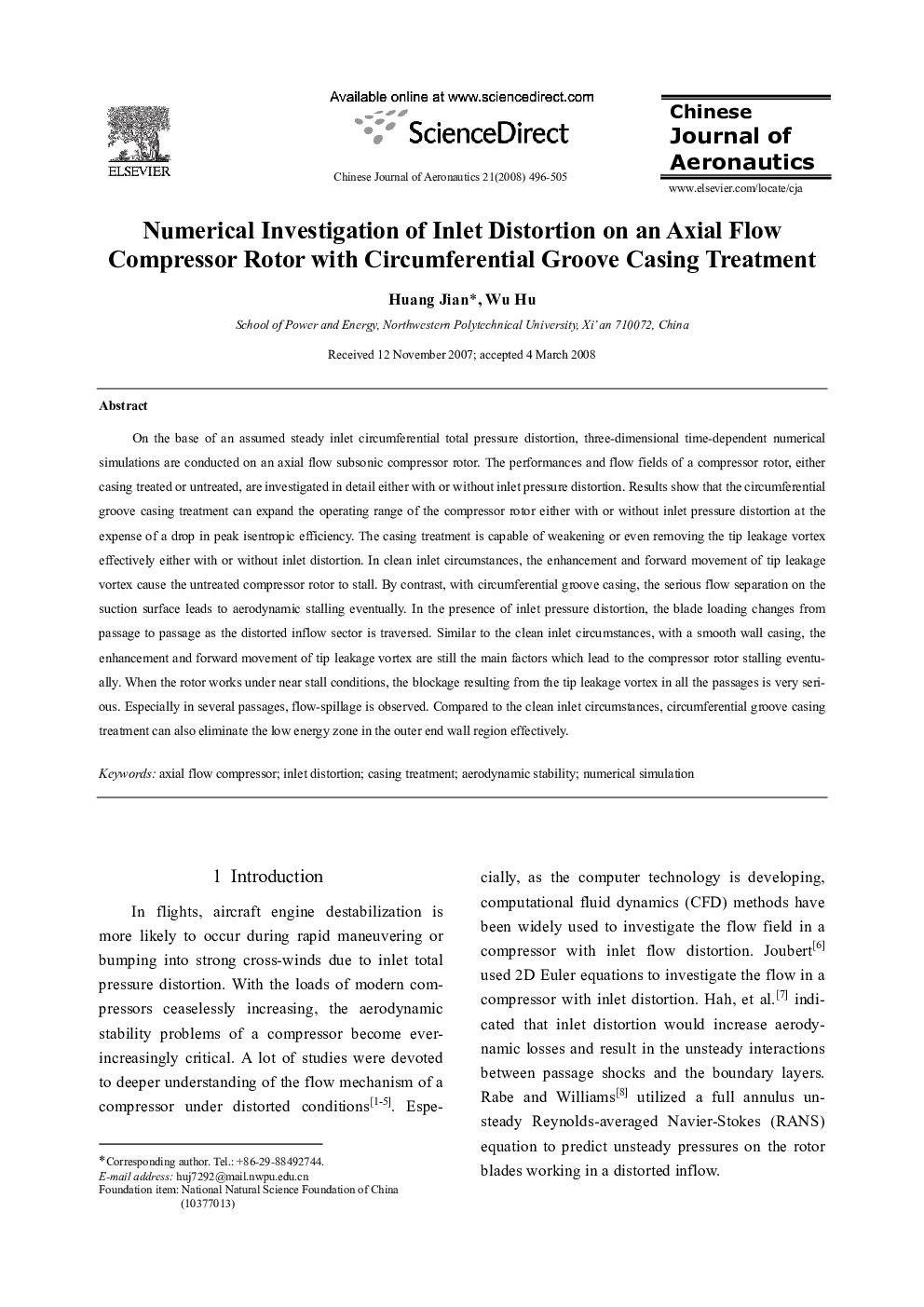| Article ID | Journal | Published Year | Pages | File Type |
|---|---|---|---|---|
| 757516 | Chinese Journal of Aeronautics | 2008 | 10 Pages |
On the base of an assumed steady inlet circumferential total pressure distortion, three-dimensional time-dependent numerical simulations are conducted on an axial flow subsonic compressor rotor. The performances and flow fields of a compressor rotor, either casing treated or untreated, are investigated in detail either with or without inlet pressure distortion. Results show that the circumferential groove casing treatment can expand the operating range of the compressor rotor either with or without inlet pressure distortion at the expense of a drop in peak isentropic efficiency. The casing treatment is capable of weakening or even removing the tip leakage vortex effectively either with or without inlet distortion. In clean inlet circumstances, the enhancement and forward movement of tip leakage vortex cause the untreated compressor rotor to stall. By contrast, with circumferential groove casing, the serious flow separation on the suction surface leads to aerodynamic stalling eventually. In the presence of inlet pressure distortion, the blade loading changes from passage to passage as the distorted inflow sector is traversed. Similar to the clean inlet circumstances, with a smooth wall casing, the enhancement and forward movement of tip leakage vortex are still the main factors which lead to the compressor rotor stalling eventually. When the rotor works under near stall conditions, the blockage resulting from the tip leakage vortex in all the passages is very serious. Especially in several passages, flow-spillage is observed. Compared to the clean inlet circumstances, circumferential groove casing treatment can also eliminate the low energy zone in the outer end wall region effectively.
